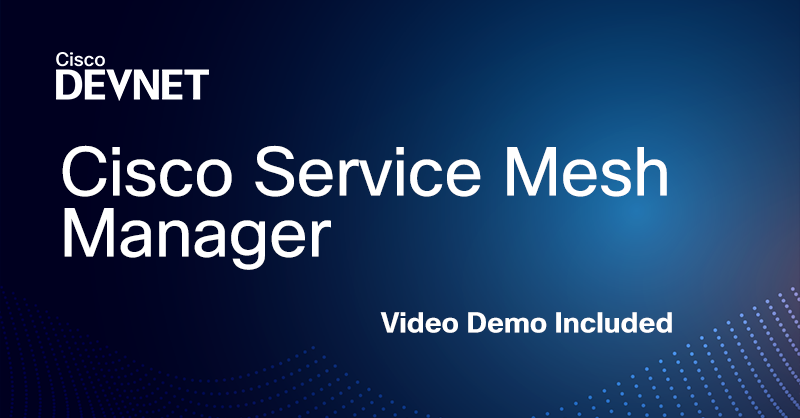- Apple doesn't need better AI as much as AI needs Apple to bring its A-game
- I tested a Pixel Tablet without any Google apps, and it's more private than even my iPad
- My search for the best MacBook docking station is over. This one can power it all
- This $500 Motorola proves you don't need to spend more on flagship phones
- Finally, budget wireless earbuds that I wouldn't mind putting my AirPods away for
Increase the Performance and Security of Your Network

For container-based applications that need to scale, the capability to analyze the traffic between services is key to optimizing and managing the system. While the service mesh facilitates communication between microservices, the observability of component traffic and health requires more tooling. This is where Service Mesh Manager—an add-on to Cisco Intersight—steps in.
In Episode 54 of DevNet Snack Minute, we talked with Michael Chenetz, the Head of Content, Community, and Events at Cisco DevNet, about Service Mesh Manager.
Michael begins by introducing Service Mesh Manager and the problem it addresses. As your infrastructure migrates towards containers—and especially Kubernetes clusters—the need arises to see traffic across those containers and pods. As the number of containers and pods increases, so does your need to gather and correlate that information. You need to see how your workloads are performing. Perhaps you even need to set Service Level Objectives (SLOs).
A service mesh serves as a fabric across multiple clusters, collecting all of this information and facilitating communication between containers and clusters. Service Mesh Manager is an add-on within Cisco Intersight that provides additional observability for your service mesh.
Michael continues by highlighting the advantages of a service mesh. With a variety of different containers and services which need to communicate with one another, a service mesh lets you abstract away that functionality which is common across your services. One example of a commonality is the use of mTLS for authentication, which removes the developer’s burden of dealing with certificates and secure connections.
Additionally, logging and analytics can be handled at the service-mesh level rather than needing to be built into the application.
With all the fundamentals covered, Michael gives a demo of Cisco’s Service Mesh Manager itself. Through the demo, Michael demonstrates the observability provided through the interactive topology map. Michael walks through the live view of services as well as the timeline which allows viewing the status at any point. Both individual services and the overall topology map can be viewed.
Additionally, Service Mesh Manager allows for the configuration of traffic management through load balancers. To demonstrate this, Michael walks us through a Canary Deployment implementation using Service Mesh Manager.
When compared to Istio—which is a command-line utility only—Service Mesh Manager adds a graphical interface that allows for increased observability as well as quick configuration changes.
We plan to bring Michael back in a later episode for more details, so stay tuned! In the meantime, if you want to learn more about Service Mesh Manager, check out the Service Mesh Manager User Guide.
Want more? DevNet Snack Minute is your weekly, ten-minute coverage of all things DevNet, Each episode is hosted by Matt DeNapoli, Manager of Developer Advocacy (@theDeNap) and Kareem Iskander, Sr. Tech Advocate with Cisco Learning & Certifications (@Kareem_isk). It’s a great way to learn about Cisco APIs, coding, and other cool stuff. Subscribe to the DevNet Snack Minute YouTube Channel to stay connected!
Share:

